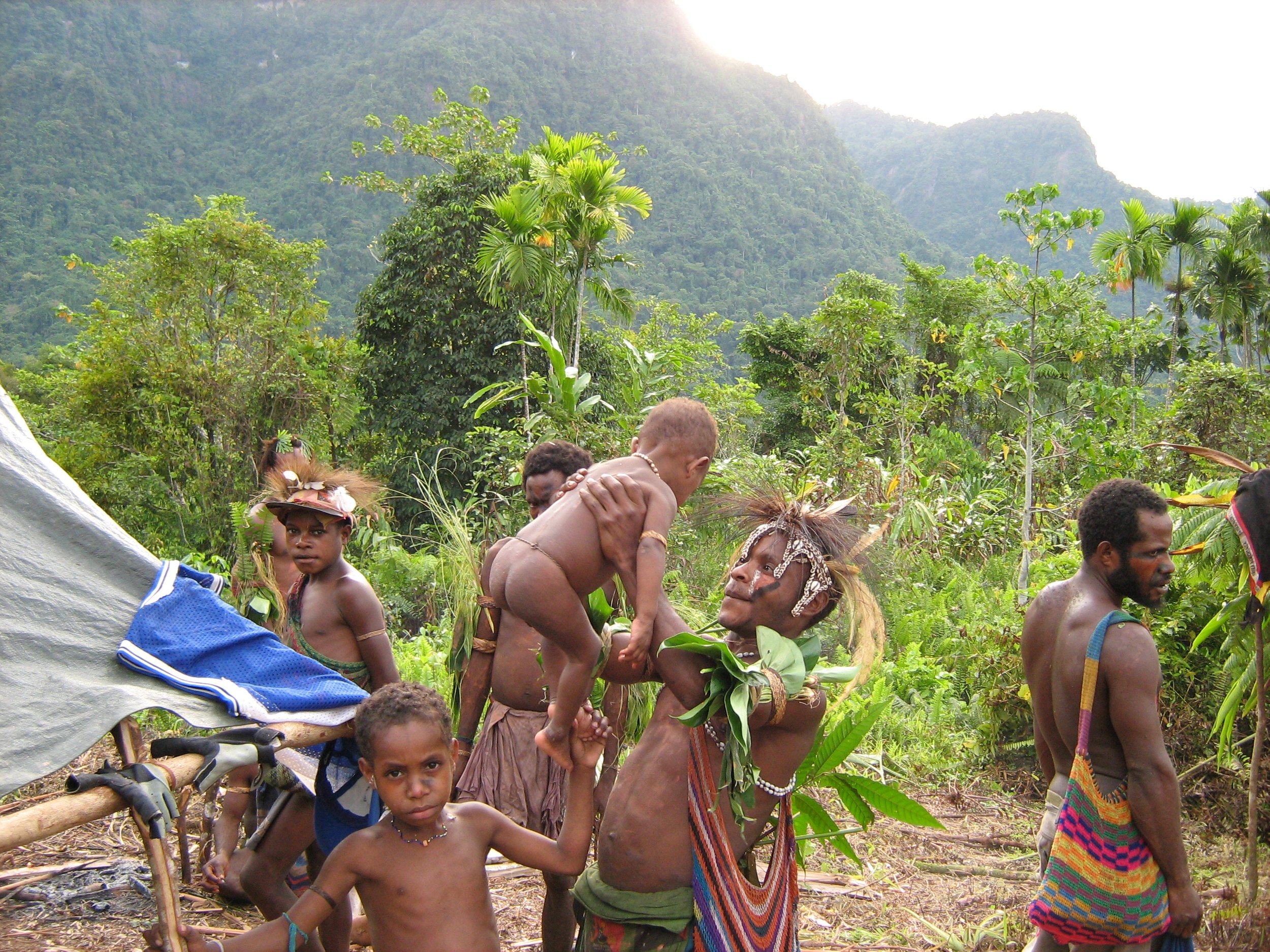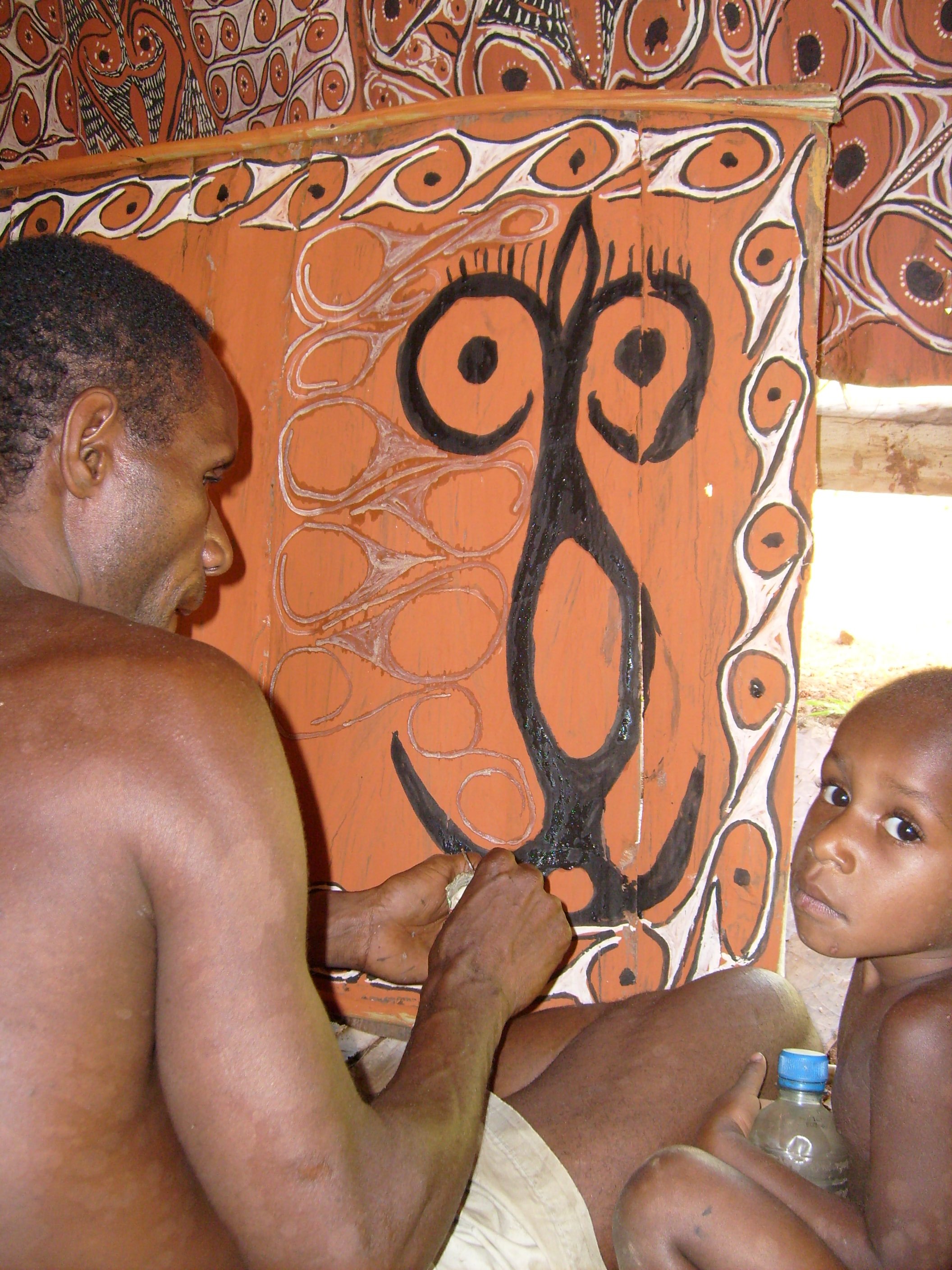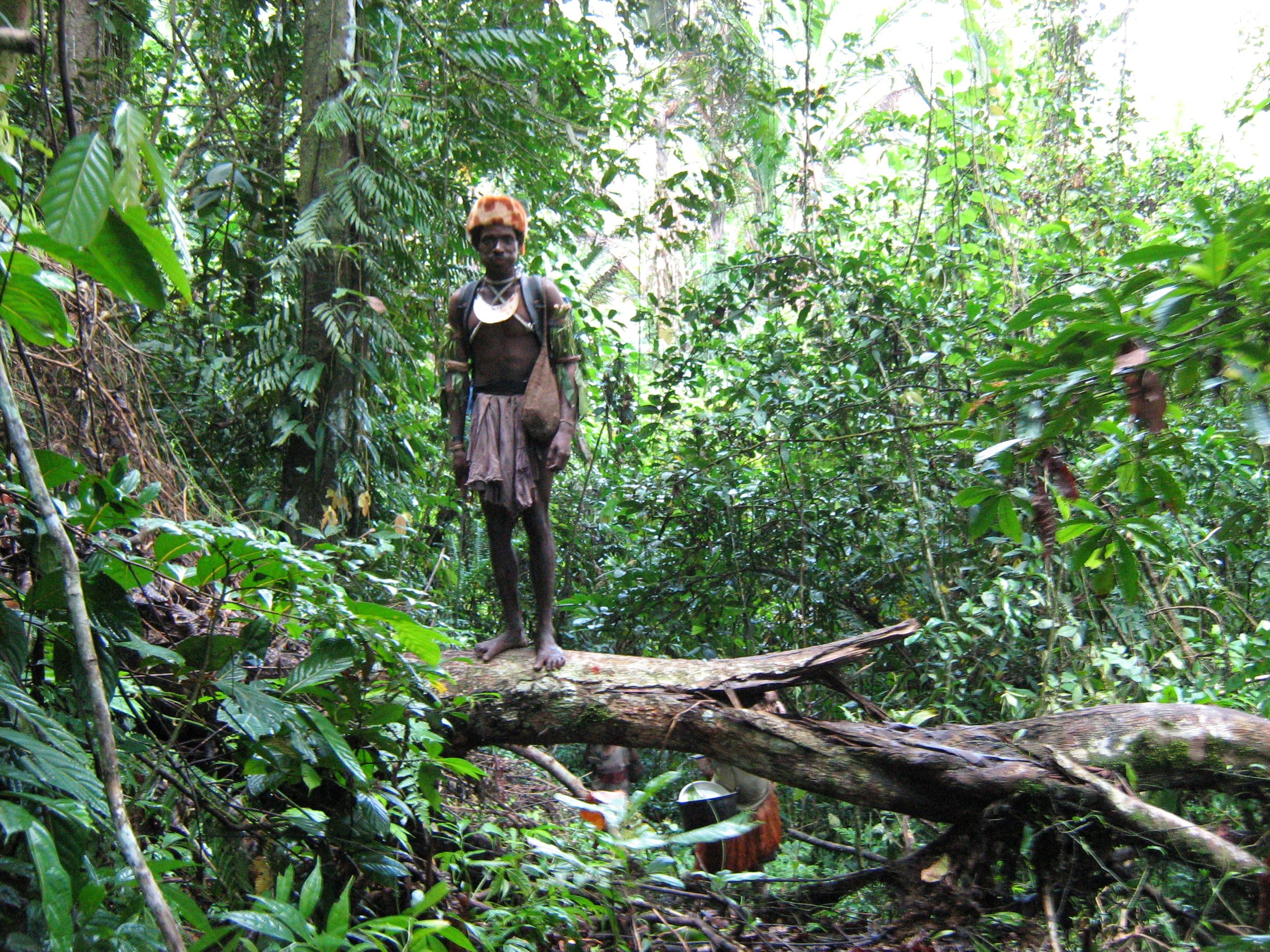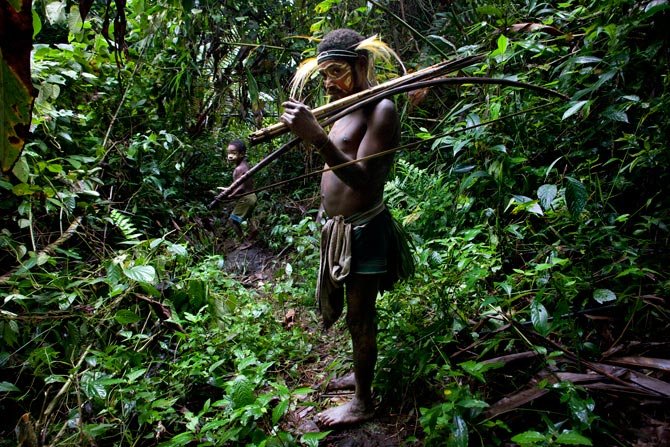
The Guardians
Our close collaboration with these cave owning communities has allowed us trek through their bush, a virgin rainforest, to find sacred cave sites of past generations. With their permission, we are recording their ancestral stories to be preserved in a book for future generations.
Our commitment is to these people and their desire to stay on their land and not leave their caves.
They want to enhance the quality of their lives, and yet conserve their unique culture and identity. They want to ensure their continued autonomy by hosting future scientists keen to study the caves.
By collaborating with the landowners and cave guardians, we are providing transferable skills to their next generation, between PNG ethnographers and these hunter-gatherers.
Our priority is to cultivate a PNG laboratory for PNG scientists first. This will allow the exposure of these remote people to be buffered by the familiarity of PNG people rather than diverse foreigners.

Engim cave owner

Meakambut family

It's a 2 day walk to the caves

the Meakambut are part of the Penali tribe

KCAF team traveling with Meakambut people

Aramblack boy

Namatta family - Penali

Moinene boy

KCAF team members in the caves

The Awim people are know for their beautiful sago bark paintings

Awim Sago Bark Painting

Meakambut man

A Meakambut camp

Meakambut man

Moinene people


Women traveling to the caves

Meakambut men at their caves

Mr Pasu in the bush

Aramblack kids

Meakambut man
The Penale, Ewa and Alamblak tribes of the Upper Karawari and Arafundi Rivers of East Sepik Province, PNG, are the tribes who own these decorated caves. Their estimated population is 7000 adults and children. Most members of these tribes remain semi-nomadic and one clan of the Penale continue to live in their ancestral caves today.
The Penale are a widely dispersed tribe living on the Arafundi River, just east of the Karawari River. These people occupy several villages today, but the entire tribe owns the majority of the caves we have recorded to date. They speak various dialects of the same language. It is hypothesized that the Penale originally come from the Yuat River area, to the east.
The Ewa are a tribe on the Upper Karawari River, with their own ancestral caves and slightly different traditions accorded to the use of these caves. They speak a language of the Enga family, implying their origin is somewhere south, in the highlands of Enga Province.
The Alamblak are a small tribe of nomadic foragers living close to the riverside. They are just beginning to establish a village on the Upper Karawari, with small gardens and a few pigs. They are also presumed to be from Enga in the distant past. Related to the Ewa, the Sumariop are far less settled and their cave art may be less elaborate.



